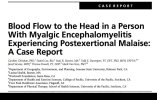Which is why we need an in vitro test for PEM, to eliminate the risk for patients. That would be a game changer for research.
Yes, ethics can pose inconvenient dilemmas. Goodness knows as a human being I have made enough mistakes myself, which is why I conclude one has to make it a rule to face up to ethical issues and respond constructively rather than ignore them. To which end it helps to discuss and debate and listen to other peoples' opinions. So here is mine.
I once did a stint briefly employed in ethical vetting of sponsorship partners for a charity. It was salutory to learn what people working for companies can do following simple motivations, like a fiduciary responsibility for the pursuit of profit, if ethical oversight is absent.
Profit is not the only motivation which can lead to unethical behaviour, science can too. We see increasing instances where desire for personal career success distorts science and replaces truth with plausible fiction, also the use of scientific publications for influencing.
Considering knowledge as power, the desire in ME's case is for scientific revolution, for PWME to be recognised after decades of being treated as abjects. We should be very careful where that takes us, as ends justifying means arguments, regarding experimentation on PWME, risk backfiring and justifying the cruelty of the mistaken psychologists we decry.
Conversely both money and knowledge can help a lot if used wisely. The devil is in the detail.
Experimental investigation can be ethical if designers can be sufficiently inventive to get around ethical obstructions via experimental design,
in vitro methods would be very helpful for this.
I've long believed and said that the only way to truly solve this will involve research facilities with live-in patients long-term, so they can be monitored almost 24/7.
I agree it might be ethical to monitor PWME in their daily activity for example and study self induced occurrences of PEM and compare these with healthy controls. It might even be more informative.
To my mind exercise challenge for PWME is like asking a diabetic to do without insulin to see what happens, it just ain't right. We already know this and bravado doesn't help any. You end up with a scenario comparable to lining up "brave" servicemen in a nuclear detonation zone to see what effect it has, hindsight proves they shouldn't have done that but they did.
If we learn anything from that, it should be not to repeat the error of unethical treatment of human beings. If you know something is harmful, the ethical choice is not to deliberately inflict it on others, whether part of an experiment or not. Experimentalists ought to face and rise to that challenge IMHO.


